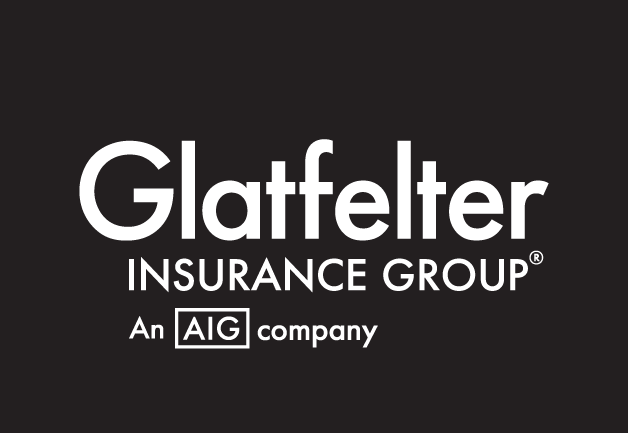Consider these helpful tips to prevent holiday décor mishaps at your church
It’s beginning to look a lot like Christmas! With the joy of the holiday season comes the task of decorating your church from head to toe, decking it out in vibrant colors and reminders of the reason for the season. Along with those decorations come a few hazards for your property, fire being one of the greatest risks. Christmas trees may be a beautiful touch of the outdoors brought inside to brighten your space, but when they aren’t cared for properly, the results can be disastrous. Caring for your tree well and choosing your decorations wisely can help you prevent a major fire risk later on.
Before you start decorating, consider these Christmas tree safety tips:
1. Choose wisely.
The fresher your tree, the less likely it is to catch fire. When you set out to choose a tree for your church, be sure to buy a tree that has vibrant, green needles, a base that is not cracked or split and needles that stay intact when you touch them – these are all great indicators of a freshness. The needles on the tree should also feel soft and springy. When they begin to feel dry and brittle, or start to fall off, the tree is becoming a greater fire risk due to dryness. It’s also important to note that the tree you choose has been outside in the cold, so when you bring it indoors to a warm environment, it will dry out quickly if it’s not properly cared for. Check out these tips for picking a tree from The Spruce.
The holiday season is bringing along colder weather – is your church prepared for the winter months? Snow fall, ice and sleet can pose certain hazards to your buildings, property and congregation.
2. Hydrate, hydrate, hydrate.
Just like you, your tree needs to be hydrated. The tree in your home likely receives a bit more attention, as you're there every day. If you're not at your church every single day, the tree has the opportunity to dry out. Trees dry out extremely quickly, and if not watered often they can pose a very high risk for fire.
Refresh your tree’s stand with new water every single day. Depending on the size of the tree and how warm you keep your building, it can use up to 2 gallons of water each day – some trees may require even more. During the Christmas season, designate a watering schedule with members of your team dedicated to ensuring the tree has fresh water and is in a good condition.
One of every four Christmas tree fires is caused by the tree being located too close to a heat source. Strategically place your tree at least three feet away from any sources of heat and always place the tree away from candles.
Check your smoke detectors to ensure that they are working properly and have fully stocked batteries. It’s also beneficial to be aware of the risk of trees tipping over and falling on guests. Large tree stands help to anchor your tree and reduce the risk of falling.
4. Choose ornaments and lighting carefully.
While your congregation and guests may be mesmerized by beautiful lights strung throughout your tree, there are a few hazards to consider. You'll want to check your lights to make sure they aren't damaged in any way. Frayed or exposed wires pose a huge risk for fire. You'll also want to ensure that the lights you choose are safe for indoor or outdoor use, depending on where you're placing your tree.
According to the National Fire Protection Association, one of every three Christmas tree fires is caused by electrical problems. Double check your string of lights before you buy them to make sure they have a stamp of approval from the Ul or ETL/ITNSA. SafeWise provides a great guide to follow when you’re deciding on Christmas lights.
5. Promptly remove your tree.
When the holidays come to an end and your celebrations are over, it’s time to remove your decorations. While it may be nice to leave your tree in place for a little while, dried out trees are fire hazards. Your community is likely to have a recycling program, where you can properly dispose of your tree.
With a few simple tips, you’ll be able to keep your tree bright, fresh and beautiful for the holiday season, while reducing your risk of a fire and keeping your church and its members safe.
DISCLAIMER
The information contained in this blog post is intended for educational purposes only and is not intended to replace expert advice in connection with the topics presented. Glatfelter specifically disclaims any liability for any act or omission by any person or entity in connection with the preparation, use or implementation of plans, principles, concepts or information contained in this publication.
Glatfelter does not make any representation or warranty, expressed or implied, with respect to the results obtained by the use, adherence or implementation of the material contained in this publication. The implementation of the plans, principles, concepts or materials contained in this publication is not a guarantee that you will achieve a certain desired result. It is strongly recommended that you consult with a professional advisor, architect or other expert prior to the implementation of plans, principles, concepts or materials contained in this publication.
This blog post may contain the content of third parties and links to third party websites. Third party content and websites are owned and operated by an independent party over which Glatfelter has no control. Glatfelter makes no representation, warranty, or guarantee as to the accuracy, completeness, timeliness or reliability of any third party content. References to third party services, processes, products, or other information does not constitute or imply any endorsement, sponsorship or recommendation by Glatfelter, unless expressly stated otherwise.
Related posts
Many ministries spend countless hours planning the trip’s itinerary, fundraising, and preparing teams, but one critical area often overlooked is insurance.
About the top 4 insurance claims houses of worship experience.
Tips on how to make list of church inventory to help you if a claim occurs.





.png?height=300&name=Glatfelter%20Team%20-%20Blog%20-%20Author%20(1).png)




Submit a Comment